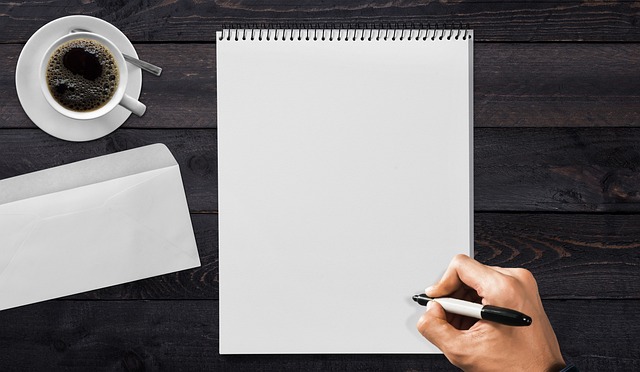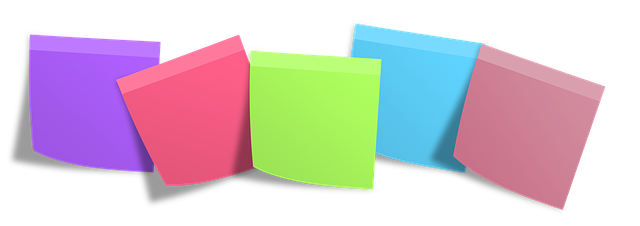Are you struggling to write consistently and efficiently? Do you find yourself staring blankly at a blank page, unsure of where to begin? If so, you’re not alone. Many writers face the common obstacle of finding it challenging to get started, to maintain focus, or to organize their thoughts effectively. But fear not! In this article, we will delve into the world of block writing, a technique that can help you overcome these hurdles and become a master of the written word. So, grab your favorite writing utensil and prepare to unlock the secrets of how to block write effectively.
Contents
- 1. Understanding the Art of Block Writing: Key Principles and Benefits
- 2. Outlining Your Ideas: A Crucial Step in Preparing for Block Writing
- 3. Establishing a Productive Writing Environment: Creating the Ideal Setting for Block Writing
- 4. Techniques for Overcoming Writer’s Block: Overcoming Challenges and Unlocking Creativity
- 5. Effective Time Management: Maximizing Your Writing Potential Through Strategic Planning
- 6. Developing Momentum: Tips for Sustaining Focus and Flow in Block Writing
- 7. Refining Your Block Writing Skills: Honing Your Craft and Perfecting the Process
- 8. Troubleshooting Common Pitfalls: Addressing Challenges in Block Writing and Finding Solutions
- Frequently Asked Questions
- To Conclude
1. Understanding the Art of Block Writing: Key Principles and Benefits
Block writing, also known as block letters, is an essential skill that can greatly enhance your written communication. It involves writing in a way that ensures each letter is separate and distinct, forming clear and legible words. By mastering the key principles of block writing, you can unlock a multitude of benefits that will improve both your personal and professional life.
One of the primary advantages of utilizing block writing is its simplicity and readability. The distinct separation between letters makes it easier for readers to understand and decode your message at a glance. Furthermore, block writing is particularly useful for individuals with visual impairments or dyslexia, as the clear and consistent letterforms reduce the chance of confusion or misinterpretation. In a world that increasingly relies on digital communication, block writing can make your messages more accessible and inclusive for a wider audience.
2. Outlining Your Ideas: A Crucial Step in Preparing for Block Writing
When it comes to block writing, outlining your ideas is an essential initial step that helps you streamline your thoughts and present a well-structured piece of work. By organizing your ideas beforehand, you lay the foundation for a coherent and compelling argument or narrative. Creating an outline not only aids in the writing process but also fosters a deeper understanding of the topic at hand.
Here are a few reasons why outlining is indispensable:
- Enhances clarity: Outlining allows you to identify the main points and supporting details, helping you arrange them logically. This clarity ensures that your message flows smoothly, preventing any confusion for your readers.
- Improves efficiency: By sketching out the structure of your writing in advance, you avoid repetitive or irrelevant content, making your piece more concise and focused.
- Facilitates organization: With an outline, you can prioritize ideas, assign appropriate subheadings, and establish a logical flow. This organization guides your readers through your work seamlessly, making it easier for them to comprehend and follow your thoughts.
Ultimately, investing time in outlining your ideas sets the stage for successful block writing. It streamlines the writing process, ensures coherence, and reinforces your argument or narrative. So, before diving into your next writing project, remember to harness the power of outlining and witness the positive impact on your final piece.
3. Establishing a Productive Writing Environment: Creating the Ideal Setting for Block Writing
Creating the ideal setting for block writing is essential to ensure productivity and maintain focus. Here are some tips to establish a productive writing environment:
• Find a quiet space: Select a secluded area where you can minimize distractions. Whether it’s a cozy corner in your home or a local coffee shop, make sure it’s a space where you can concentrate without interruptions.
• Organize your workspace: Keep your writing area clean and clutter-free. A tidy desk can help clear your mind and enable you to focus on your work more effectively. Additionally, try to avoid visual distractions by removing unnecessary objects from your line of sight.
• Set the mood: Consider using ambient noise or music to enhance your concentration. Some writers prefer complete silence, while others find that soft instrumental music or white noise in the background helps to create a conducive atmosphere for writing. Experiment with different options to discover what works best for you.
• Use ergonomic tools: Invest in a comfortable chair and a suitable desk that provides proper support for your back and wrists. Additionally, ensure that the lighting is adequate and that your computer screen is positioned at eye level to avoid strain.
• Establish a routine: Creating a writing schedule can help train your brain to focus during specific times. By setting aside dedicated periods for writing, you condition your mind to be more productive during those designated hours.
• Minimize distractions: Disable notifications on your phone or computer to avoid disruptions. Consider using productivity apps or browser extensions that block certain websites or limit internet access during focused writing sessions.
By implementing these strategies, you can create an ideal setting for block writing that fosters productivity and enables you to tap into your creative flow. Remember, what works best for one person might not necessarily work for another, so don’t be afraid to experiment and customize your writing environment to suit your unique needs.
4. Techniques for Overcoming Writer’s Block: Overcoming Challenges and Unlocking Creativity
When faced with writer’s block, it can be frustrating and challenging to find inspiration. However, there are several effective techniques that can help you overcome this obstacle and unlock your creativity. Here are some invaluable strategies:
- Freewriting: Allowing your thoughts to flow freely without any judgment or concern for grammar or punctuation can help you break through the mental barriers of writer’s block. Simply write whatever comes to mind, even if it seems unrelated or nonsensical. This exercise can stimulate new ideas and get your creative juices flowing.
- Brainstorming: Gently coax your thoughts by brainstorming ideas and jotting them down. Use mind-mapping techniques to visually connect various concepts, enabling you to perceive new connections and directions. By exploring different angles and possibilities, you can discover a fresh perspective to tackle your writing project.
- Taking a Break: Sometimes, stepping away from your writing for a while can work wonders. Engaging in activities that you enjoy, such as going for a walk in nature, practicing meditation, or listening to your favorite music, can provide the mental recharge you need. Allowing your mind to relax and divert its attention momentarily can help break the cycle of frustration and open up space for new ideas to emerge.
Remember, overcoming writer’s block is a process that varies for each individual. The key is to experiment with different techniques and find what works best for you. Whether it’s through freewriting, brainstorming, or taking a well-deserved break, these strategies will help you unleash your creativity and conquer any writing challenges that come your way.
5. Effective Time Management: Maximizing Your Writing Potential Through Strategic Planning
As a writer, time management is crucial to ensure optimal productivity and success. By implementing strategic planning techniques, you can seamlessly balance your commitments, prioritize tasks, and make the most of your writing potential. Here are some effective strategies that will help you manage your time efficiently:
- Create a schedule: Start by mapping out your daily, weekly, or monthly tasks. Break down your writing projects into manageable chunks and allocate specific time slots for each. Having a structured schedule will keep you organized and focused on completing your writing goals.
- Set realistic deadlines: When planning your writing projects, set goals that are attainable and reasonable. Establishing deadlines will provide a sense of urgency and motivation, aiding in the completion of your work. Remember to break these deadlines into smaller milestones to help you stay on track.
- Eliminate distractions: Minimize interruptions during your writing sessions by identifying potential distractions and finding ways to remove them. This could mean turning off notifications on your phone, dedicating a quiet space for writing, or using website blockers to limit access to social media and other time-consuming websites.
By implementing effective time management techniques, you can optimize your writing potential and achieve great writing outcomes. Remember to continuously evaluate and adjust your strategies as needed to find the ideal balance and maximize your productivity. With proper planning and dedication, you’ll be amazed at the incredible writing achievements you can accomplish!
6. Developing Momentum: Tips for Sustaining Focus and Flow in Block Writing
When it comes to block writing, maintaining focus and flow can sometimes be a challenge. However, with the right strategies, you can develop momentum and sail through your writing tasks effortlessly. Here are some tips that can help you sustain focus and flow throughout the process:
- Set clear goals and break tasks into chunks: Start by defining clear objectives for your writing session. Break down your work into smaller, manageable tasks, and focus on completing each one before moving on to the next. This will help you stay motivated and make progress without feeling overwhelmed.
- Create a conducive environment: Find a quiet and comfortable space where you can write without distractions. Clear your workspace of clutter, set up adequate lighting, and have all the necessary materials within reach. A serene environment can enhance concentration and allow ideas to flow naturally.
- Manage your time effectively: Set aside dedicated time slots for writing, and stick to your schedule. Avoid multitasking and try to eliminate any potential interruptions. Use timers or time management techniques, such as the Pomodoro Technique, to structure your work and stay focused during writing periods.
By implementing these strategies, you can develop the momentum needed to sustain focus and flow in block writing. Remember, consistent practice and self-discipline are key to achieving success in any writing endeavor. So, set yourself up for success by implementing these tips and watch your productivity soar!
7. Refining Your Block Writing Skills: Honing Your Craft and Perfecting the Process
In order to become a master in block writing, it is important to continuously refine and hone your craft. Achieving perfection in the process requires dedication and practice. Here are some valuable tips and techniques to help you improve your block writing skills:
1. **Embrace the art of brainstorming:** Before diving into your block writing, take some time to brainstorm and jot down ideas. This will help you organize your thoughts and create a clear structure for your content.
2. **Master the art of outlining:** Outlining plays a crucial role in the block writing process. Create a detailed outline that includes main points and sub-points to guide your writing. This will keep your thoughts organized and ensure a seamless flow of ideas throughout your content.
3. **Focus on clarity and simplicity:** Block writing is all about delivering information in a concise and direct manner. Aim for clear and simple sentences that effectively convey your message. Avoid unnecessary jargon or complex language that may confuse your readers.
4. **Use headers and subheaders effectively:** Utilize headers and subheaders in your block writing to break down your content into easily digestible sections. This not only enhances readability but also allows readers to quickly navigate through your piece and find the information they need.
5. **Revise and edit your content:** Once you have completed your block writing, invest time in revising and editing. Pay attention to sentence structure, grammar, spelling, and overall coherence. This step ensures that your content is polished and error-free.
Remember, refining your block writing skills is an ongoing process. By implementing these techniques, you will gradually become a more proficient writer, capable of creating engaging and impactful content.
8. Troubleshooting Common Pitfalls: Addressing Challenges in Block Writing and Finding Solutions
While block writing can be an effective way to organize content, it can also present certain challenges. Fortunately, there are several strategies you can employ to overcome these common pitfalls and enhance the readability and flow of your text.
1. Lack of structure: One of the main challenges in block writing is maintaining a coherent structure. To address this, try using subheadings to break up your content into smaller sections. This will make it easier for readers to navigate your text and find the information they are looking for. Additionally, consider incorporating bullet points or numbered lists to highlight key points or steps in your writing.
2. Monotonous tone: Another issue commonly encountered in block writing is a monotonous tone that can make the text dull and uninteresting. To add variety, try utilizing different sentence structures such as short and long sentences, as well as varying your word choice and incorporating descriptive language. Including relevant examples or anecdotes can also help to engage your audience and make your writing more relatable and impactful.
Frequently Asked Questions
Q: What is block writing and why is it important for effective writing?
A: Block writing is a technique that involves setting aside a specific time to write continuously without interruptions. It is important because it allows writers to enter a state of flow, enhancing productivity and creativity.
Q: How can block writing help overcome writer’s block?
A: By scheduling regular block writing sessions, writers can train their minds to focus and overcome mental barriers that often lead to writer’s block. It encourages a proactive approach to writing, putting writers in the habit of consistently putting words on paper.
Q: What are some strategies to effectively block write?
A: One effective strategy is to pick a specific time and place for your block writing sessions. This helps create a routine and signals your brain that it’s time to focus. Additionally, eliminating distractions, such as turning off notifications, can help maintain concentration during the writing session.
Q: How long should a block writing session ideally be?
A: The duration of a block writing session can vary depending on personal preference and schedule. Some writers find that shorter sessions of 15-30 minutes work best, while others prefer longer sessions of 1-2 hours. Experiment and discover what duration allows you to enter a state of flow without feeling overwhelmed.
Q: Should writers always stick to a strict schedule for block writing?
A: While having a consistent schedule is beneficial, it’s important to be flexible. Life can sometimes interfere with designated writing time. If you miss a session, don’t get discouraged. Simply reschedule it and make an effort to get back on track with your writing routine.
Q: How can writers effectively manage distractions during block writing?
A: Removing distractions, such as turning off your phone or closing unnecessary tabs on your computer, can greatly help in maintaining focus. Some writers also find it helpful to use productivity apps or techniques like the Pomodoro Technique to stay focused during block writing sessions.
Q: Is it necessary to outline or plan before block writing?
A: It depends on personal preference and the nature of the writing project. While some writers thrive on spontaneity during block writing, others find it helpful to outline or plan their writing in advance. Experiment with both approaches and see what works best for you.
Q: Can block writing be used for any kind of writing?
A: Yes, block writing can be applied to various forms of writing, whether it’s academic essays, creative writing, or professional content. The focused and uninterrupted time it provides can enhance writing quality and productivity across different genres.
Q: What are some common pitfalls to avoid when block writing?
A: One common pitfall is falling into the trap of self-editing during the writing session. Block writing is about generating ideas and content freely, so save the editing for later. Additionally, it’s important not to get discouraged by initial drafts, as the goal is to produce a first draft that can later be refined.
To Conclude
In conclusion, mastering the art of block writing can greatly enhance your writing efficiency and organization. By following these tips and practicing regularly, you can become a more effective and confident writer.









